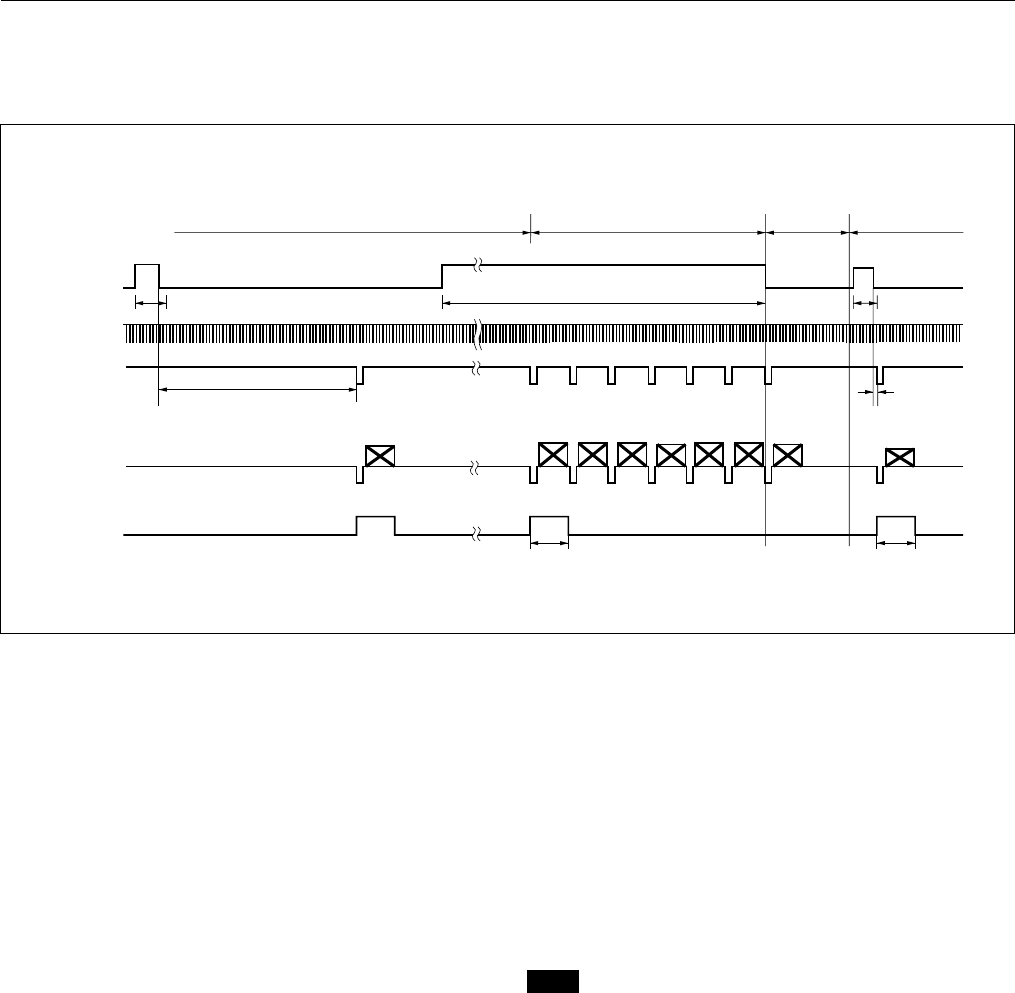
14
Mode Setting
1
1
2
2
For setting the shutter speed using the trigger pulse width
HD/VD input
◆ Continuous HD input/Single VD input
*1 This is a signal input from outside. Make sure to
input both HD and VD signals in this case. Input
the signal so that the VD phase aligns with the HD
falling edge.
*2 Exposure time (Te)
Te = Trigger pulse width + 97
µ
sec (EIA)
Te = Trigger pulse width + 120
µ
sec (CCIR)
(The effective trigger pulse width for the external
trigger shutter operation is between 2
µ
s and 1/4 s.)
*3 The normal operation state is chosen when the
trigger pulse width is 1/3 s or more. (By entering a
continuous VD in this section, an image is output.)
The trigger falling edge restores the external
trigger shutter operation. In this case, the area
between the falling edge of a trigger pulse and the
subsequent 50 ms period is an external trigger
input inhibition area. There is no guarantee of
operation for any trigger input selected in this
period.
*4 Input the external VD within the period of 10
µ
s to
65 ms after the trigger falling edge (1 and 2 in
the figure). There is no guarantee of operation
when any other input is selected. If an invalid
signal is input, the input is changed to a valid
signal and, after several V signals, normal
operation will resume.
*5 When the external trigger shutter mode changes to
the normal operation mode, one WEN signal is
output.
Note
Make sure that the trigger signal and the VD signal
make up a pair.
An image is not output correctly when the next trigger
is input before the image for the previous trigger is
output.
External trigger shutter operation
Normal operation*
3
Mode transition state
External input
inhibition area
(50 ms)
External trigger
shutter operation
Exposure time (Te)*
2
Exposure time
(Te)*
2
Trigger pulse width*
3
T: T=10
µ
s to 65 ms*
4
min 10
µ
s
250 H (EIA)
293 H (CCIR)
Trigger*
1
External HD*
1
External VD*
1
(Single VD)
Video out
WEN
*
5
250 H (EIA)
293 H (CCIR)
250 H (EIA)
293 H (CCIR)


















